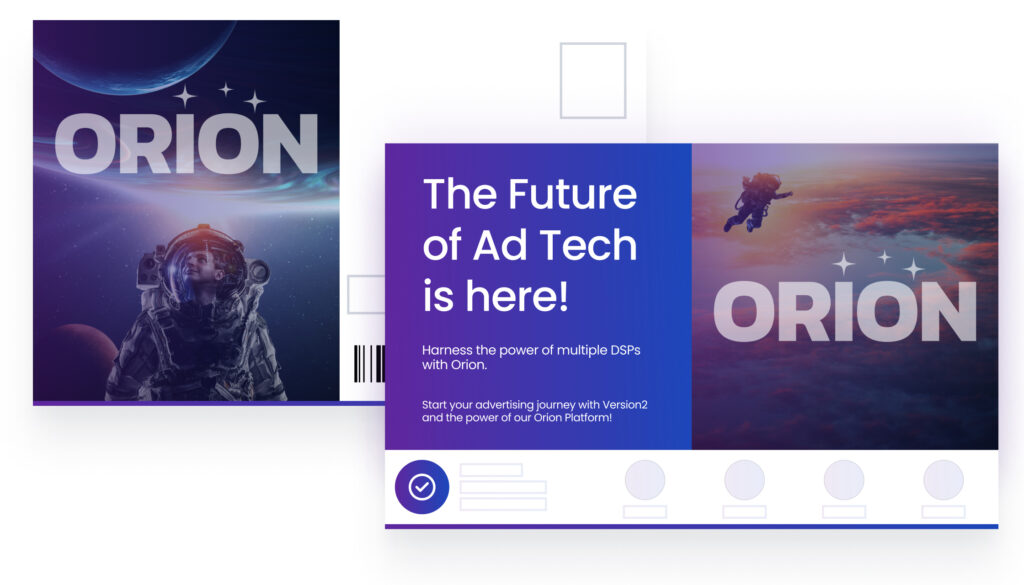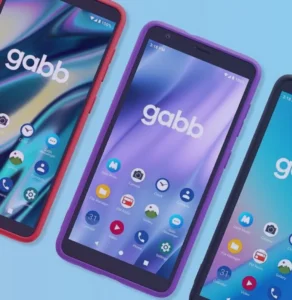Welcome back to CHANNELS, where we run through some of the top marketing channels available to you today, and discuss them in-depth so you can decide if they are right for your business. Last week, we talked about Social Mirror Ads. Today, we’re talking about Programmatic Direct Mail. If you’re enjoying these posts, please sign up so you never miss an update!
Introduction
It seems like magic: a customer visits your website, and a piece of mail with a promo code appears in their mailbox a few days later, allowing them to complete their purchase and giving them a positive impression of your brand.
Programmatic marketing can add automation, data, and personalization to your marketing campaigns, as well as fight ad fatigue and general digital fatigue that many of us are facing after constantly using digital tools since the pandemic.
So how do you start? Well, let’s start with definitions and descriptions.
What is programmatic direct mail?
Programmatic direct mail (PDM) combines the benefits of direct mail—high viewability, relevance, and physical presence—with the analytics, machine learning, and targeting options that programmatic advertising provides. Adding PDM to your arsenal of marketing tools can yield great results, as it is a performance-based system at its core.
A programmatic platform sends a mailer to your customer when they have completed certain behaviors, like visited and left your website, or are a part of a certain demographic. Powerful machine learning determines the best moment to send out a mailer at or around a moment of intent.
Additionally, PDM can create a positive impression of your brand. Over the past four years, we’ve all spent a lot of time on computers and other devices. Digital advertising has skyrocketed, creating banner blindness and general digital fatigue. Receiving a physical item is a surprising and pleasant addition to experiencing a brand digitally.
Do people even still read their mail?
According to several studies and surveys, yes! And some even look forward to reading it. 73% of American consumers prefer being contacted by brands via direct mail, because they can read it whenever they want.
So what is the difference between PDM and simply, direct mail?
Direct mail is also a great marketing tool, but it has several limitations without the programmatic part.
Not personalized.
With direct mail, you design and send a one-size-fits-all mailer to every customer in your Rolodex, rather than being able to send a customized campaign based on demographics or actions.
Not automated.
Running large business direct mail campaigns can be expensive and time consuming, whether you are doing it yourself or working with a partner, between designing, deciding the audience, and sending your mailers.
Limited analytics.
Direct mail cannot provide the targeting options, optimization during the campaign, or in depth analytics that programmatic campaigns can. It also cannot determine the best moment to send a mailer to your customer to entice them to purchase, visit, or reserve.
What are the benefits of PDM?

Programmatic direct mail offers solutions to each one of these limitations, and provides amazing results in the meantime.
The benefits of PDM combine the benefits of direct mail with programmatic, which provides the targeting, analytics, and optimization of our modern digital era. Let’s dive into some of the exciting statistics of both direct and programmatic mail:
High response rate
The average response rate to direct mail is 2.7% to 4.4%, while an email has around 0.6%. Plus, 42.2% of direct mail recipients either read or scan the mail they get, increasing the chance that your mail will be seen.
Great ROI
The average return on investment is $4.09 for $1.27 spent on direct mail, and according to that same study, “direct mail recipients purchase 28% more items and spend 28% more money than people who don’t get that same piece of direct mail.” The numbers don’t lie!
In-depth targeting options
One of the best features of programmatic direct mail is the powerful artificial intelligence that determines the best moment to send out the mailer, oftentimes using retargeting tactics to re-engage customers that had filled a cart and left, people who haven’t shopped in awhile, or someone who looked at your website. It can also help determine if they are not going to come back at all, preventing wasted spend.
You can also set up audiences that have similar characteristics to your customers, potentially increasing the range of your campaign. This is known as “lookalike” targeting.
A study by PebblePost found that PDM retargeting mail achieved a 152% conversion rate lift, as opposed to those exposed only to digital marketing ads, which saw a 45% lift. Those households that saw both PDM and digital marketing achieved a 290% conversion rate lift.
Personalization
Rather than sending out the campaign to everyone in your contact list, a programmatic platform analyzes the digital actions that users are taking, such as website visits, browsing patterns, and shopping cart abandonment, to trigger the dispatch of highly personalized physical mail.
Optimization and analytics
There are so many engagements that we are able to track with PDM: the use of QR codes, promo codes, and analytics on your landing page, calls, or in-store visits are just some of the stats that can be used to understand if your marketing is resonating with people and producing results.
Since programmatic direct mail is run through a DSP, the millions (and even billions) of data points can be analyzed to find places to optimize during your campaign, so you can pivot to what is working the best. Post-campaign, you can deeply understand how your campaign performed to inform future campaigns and justify spend.
Future-resistant with first party data
A PDM campaign utilizes first-party data, and one of the most consistent, unchanging direct identifiers—an address. As such, it is future-resistant, because people do not move very often, and home addresses are not going away any time soon.
Fights digital fatigue
During the pandemic in 2020-2021, we were online more than ever before. Zoom hangouts, Zoom meetings, Zoom parties, Slack, Google, email; more time on social media, less time in person; we’re experiencing more banner blindness as a result of seeing more online advertisements.
The average person receives 36 emails for every 1 piece of mail—it’s no wonder that email is now viewed as a chore and a problem rather than a delight, which is (allegedly) what it was when it first appeared.
Sending a piece of contextual, emotional, personalized mail, at the perfect moment can produce great results, and can break through the noise to set your brand apart.
KPIs of programmatic direct mail
There are many ways to measure the results of your campaign. A few are specific to programmatic direct advertising.
Response rate
The response rate measures how many people took an action, besides a conversion, as a result of your campaign, whether visiting your website, giving you a phone call, or entering the physical store.
Conversion rate
Addressed mail remains in people’s homes for, on average, 17 days. This means that the attribution window for PDM is much longer than digital media. However, you’ll still measure conversions the same way: how many people took the desired action from your campaign.
Sends
Sends are how many pieces of mail have been sent out to your audience within a specified time frame. You can set this number based on your budget.
ROAS
As always, Return on Ad Spend measures the amount of revenue generated from the campaign compared to the costs. You’ll need a way to measure conversions via attribution for this one, which is an art and a science.
Average order value (AOV)
AOV measures how much people have spent as a result of your campaign by taking the average value of individual orders.
Brand lift
Running awareness surveys after the fact can help determine whether your campaign was successful in driving awareness and positive feelings towards your brand.
Programmatic direct mail is an amazing way to incite emotion in people. It’s the perfect medium to display beautiful lifestyle imagery—and show your brand personality and the emotions you want to convey.
Cost per action
Cost per action measures how much was spent in order to achieve a conversion from a customer.
How do I design a mailer if I haven’t before?
The partner that you engage with for your campaign should be able to provide support and guidance on how to execute your PDM campaign, from start to finish. But here are a couple of key points to remember when designing:
- As with every campaign, make sure to write clear, direct, impactful copy, and that the CTA is obvious to the customer.
- Put your brand name/logo on each side of the mailer.
- Try to use your best imagery or design to elicit an emotional response: what your customer will feel when they purchase from your brand.
Okay, you’ve convinced me. How do I buy PDM?
In general, you can set up and run PDM campaigns through a demand-side platform. They are similar to other programmatic campaigns that you may have run, with the one added step of designing the physical mailer.
Make sure you do a bit of research before choosing a partner, so you can understand what questions to ask and ensure you find a company that is able to address your needs.
Several companies specialize in programmatic direct mail campaigns; a good partner will walk you through the platform and help with the learning curve of using a new channel, address privacy concerns, and connect your programmatic direct mail campaign with your other marketing channels.
Version2 helps you set up and understand the new technology options that are available to you. Not only do we provide our signature Always-On support, but creative services are available by request. Our team members have decades of experience in the advertising industry and will support, guide, and inform throughout the duration of the engagement.
Our proprietary software platform ORION, the first of its kind, provides access to the top six industry leading DSPs, so you can run and analyze cross-DSP, omnichannel campaigns that create a holistic narrative to your customer and provide amazing results.
We’d love to set up a call to talk about solutions we can provide and give a free demo of ORION. Let’s discover if our team and technology solutions can increase your ROI, automation, and ultimately provide amazing results.









